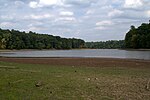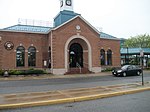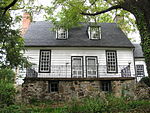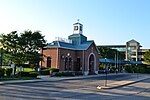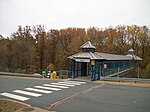Occoquan Bay National Wildlife Refuge

The Occoquan Bay National Wildlife Refuge is a National Wildlife Refuge located where the Occoquan River meets the Potomac River in Woodbridge, Virginia, United States between Belmont Bay and Occoquan Bay. The 644-acre (2.61 km2) site, about half of which is wetlands, was a popular tourist spot known as Dawson Beach until the 1940s, after which it was used for military research by the U.S. Army's Harry Diamond Laboratories from the 1960s to the 1990s. When the land was purchased from the military, it was temporarily called the Marumsco National Wildlife Refuge. The refuge was formally established and renamed in 1998, and is now managed by the United States Fish and Wildlife Service as part of the Potomac River National Wildlife Refuge Complex.
Excerpt from the Wikipedia article Occoquan Bay National Wildlife Refuge (License: CC BY-SA 3.0, Authors, Images).Occoquan Bay National Wildlife Refuge
Dawson Beach Road,
Geographical coordinates (GPS) Address External links Nearby Places Show on map
Geographical coordinates (GPS)
| Latitude | Longitude |
|---|---|
| N 38.644166666667 ° | E -77.235833333333 ° |
Address
Occoquan Bay National Wildlife Refuge
Dawson Beach Road 14050
22191
Virginia, United States
Open on Google Maps
